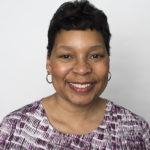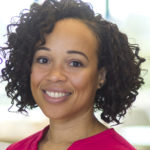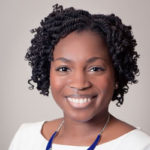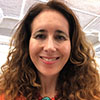By Margery Weinstein
Editor-in-Chief
Review of Optometric Business

Jan. 6, 2021
The past year was a challenging and provocative one around questions of diversity and inclusion. The death of George Floyd in May set off protests and civil unrest, which pushed many to think about how inclusive and fair our country is. Optometry school leadership also began to question more deeply whether their faculties and student bodies were diverse and inclusive enough. I reached out to diversity and inclusion professionals at a handful of optometry schools to learn more about the changes taking place, and the new goals the schools have set to better the profession.
 Angela Abraham, OD
Angela Abraham, OD
Diversity and Inclusion Liaison
New England College of Optometry (NECO)
“I think of myself as an ambassador of diversity, equity and inclusion for the profession of optometry,” says Dr. Abraham. “When I am out in public, I want to exemplify all things that are great about optometry and the profession, and I want to bring that to people who may have never come into contact with someone like me, a Black female optometrist.”
Dr. Abraham’s appointment coincided with an announcement by NECO that it had signed onto the 13% Promise, an initiative to increase equity in Black representation in eyecare companies, optometry boards and student enrollment at optometry schools to at least 13 percent, so the number of Black students mirrors the percentage of Black people in the U.S. population. To empower its new diversity and inclusion efforts, NECO released a 10-point plan, which you can click HERE to read.
A focus for Dr. Abraham is to bring diversity and inclusion efforts to the forefront of the college while “embracing differences and encouraging empathy and civility.” For example, Dr. Abraham says that she hopes to put in place a mentoring program that would bring young people, who have never met an optometrist, into contact with an optometry student or professor, who could share information about the profession, and the opportunity to become an optometrist.
The advantage of a more inclusive and diverse student body extends past the school and into the communities where the graduating ODs will work. “When I have patients who look like me, I can see their surprise, but also almost feel their relief when I walk through the door,” says Dr. Abraham, who notes the greater ease some patients of color feel when their doctor comes from their own community, or has a similar background. That commonality can facilitate a more powerful communication of trust between doctor and patient.
For many young people, financial pressure can hinder entry into professional school. For that reason, Dr. Abraham likes to speak in terms of personal investment to students who may never have considered optometry as an option. “An optometric education may be expensive, but you have to look at it as making an investment in yourself–and your community,” she says. “It’s important to have a philanthropic mindset and create a service atmosphere. Creating a “Hope Factor” is very important in my work. You invest in yourself, so you can give back to your community and keep that virtuous Cycle of Hope going.”
 Janette Pepper, OD
Janette Pepper, OD
Coordinator for Student Diversity and Inclusion
Southern College of Optometry
“I would like for each person who walks though our doors as a student, patient, employee or community member to feel they are valued and that they belong at the college,” says Dr. Pepper, who was appointed to her role in July. “I wanted to take on this role because in patient care and in academia, the feeling of belonging gives better patient outcomes, and it promotes retention and productivity of students and employees.”
Dr. Pepper says the greatest challenge in diversity and inclusion at optometry schools is facilitating a culture shift. “Some may believe that if they treat their patients with respect, that is all that is required. However, what happens when what one practitioner deems as respect is not perceived as respect from the patient because of a cultural difference or because of the practitioner’s bias? Understanding these instances are why diversity and inclusion efforts are critical in training the best optometrists,” she says.
To achieve those goals, the college’s leadership will be expanding its communication with faculty and students, and ensuring it’s a conversation in which all voices are heard. “The shared plan of the college is to assess what has been done and examine current initiatives, listen to constituents of the college, from students to employees, regarding their view of inclusion at the college, then prioritize action steps to improve. Right now, we are in the listening phase,” Dr. Pepper says.
Other Articles to Explore
When she speaks to young people, who have never considered a career as an optometrist, Dr. Pepper says she focuses on the opportunities to start your own business while helping others. “I note that optometry has opportunities to be an entrepreneur or employee in the patient care setting, industry and in consulting,” she says. “I try to convey that we enhance quality of life daily, from the young child who has trouble with eye teaming to the patient with dry eye syndrome. The expansiveness of our profession is vast and ripe for a new generation to make it their own.”
Ultimately, patients will benefit from greater diversity in the profession. “The key advantages of having a more diverse and inclusive student body in the optometric profession is numerous, but I am going to highlight three reasons,” says Dr. Pepper. “A more diverse and inclusive student body will enrich student learning, enhance patient care results and cultivate a sense of belonging.”
 Ruth Y. Shoge, OD, MPH, FAAO, Pennsylvania College of Optometry | Salus University
Ruth Y. Shoge, OD, MPH, FAAO, Pennsylvania College of Optometry | Salus University
Chair of Diversity and Cultural Competency Committee (DCCC), Association of Schools and Colleges of Optometry (ASCO)
“My goal as Chair of this committee is to continue the spread of awareness of diversity and inclusion initiatives in optometric education institutions,” says Dr. Shoge. “My top priority is to work cross-organizationally to establish objectives for schools and colleges of optometry to implement and require cultural competency, bias awareness training and cross-cultural clinical skills as part of and throughout their curriculum. Additionally, I’d like us to work to establish guidelines in this topical area for ongoing credentialing requirements for licensure in each state.”
There has never been a better time to have conversations around diversity and inclusion, says Dr. Shoge. “Some of the challenges include continuing the momentum – this work is hard and requires ongoing commitment individually and institutionally. Another challenge is that there will always be naysayers, those who think this kind of work is not necessary. I feel fortunate that the leadership in my institution and across the various optometric organizations (ASCO, NOA, AOA, ACOE, ARBO) seem committed and unified in being leaders for the industry when it comes to promoting diversity, equity, inclusion and belonging for all of our students and colleagues,” she says.
Dr. Shoge says she, and the rest of the DCCC, will be looking for key people at each college of optometry to partner with to move diversity and inclusion goals forward: “Continuing the momentum includes identifying key people at each school and within each optometric organization and corporate setting to be the lead on making sure the planning and execution of initiatives and cross-talk continues. Regarding naysayers, there will always be naysayers – those who think making change is harder than maintaining the status quo. My hope is they can at least acknowledge and appreciate the work that is being done; if not, we just keep it moving.”
She says there are both social and business benefits to greater diversity and inclusion: “All benefit when working in a diverse community – there is better understanding of different cultures, more intellectual stimulation, better productivity, and, for some companies, improved profitability. More diversity and inclusion just makes better moral sense and better business sense.”
![]()
Janene Sims, OD, PhD
Equity Advisor
University of Alabama at Birmingham (UAB) College of Optometry
“The Equity Leadership Council (ELC) was established to promote diversity, equity, and inclusion at all levels of the University,” says Dr. Sims, who serves as one of the advisors on the Council.
“The overarching goal of having a diverse University community is to better educate our students, faculty and staff to be active, informed, productive participants in a diverse society and interdependent world. Comprised of members from across all academic and administrative support divisions of the University of Alabama at Birmingham, the ELC serves as an advisory council to the Vice President and Chief Diversity Officer. It works to help UAB achieve its goals of promoting diversity and institutionalizing equity and inclusion as core values.”
Diversity and inclusion has been a long-time focus for Dr. Sims, who has served in her current role for more than five years. “I wasn’t afraid to speak up for those with no voice. Our school-wide committee has gained traction this year due to social injustices viewed by the nation. I developed a weekly article for our e-newsletter called ‘Teachable Moments.’ Topics vary from John Lewis to Breast Cancer Awareness and Henrietta Lacks.”
The greatest advantage of a more diverse college is the ability to better serve patients and students, says Dr. Sims: “Optometry is a rewarding career. The eyes tell us about so many things that are going on systemically. Also, some patients will smile a little brighter when they see someone who looks like them as the doctor.”
 Brittany Wright, OD
Brittany Wright, OD
Coordinator of Diversity, Equity and Inclusion
University of Missouri College of Optometry
“Generally, my goals are to assist in increasing the diversity of our program and profession, to ensure our students graduate with culturally competent skills to care effectively for every patient, and to support our College community in continuing to provide an inclusive, supportive place for all members,” says Dr. Wright.
“I hope to work alongside College colleagues to (1) increase recruitment, retention, support and success of under-represented students (and future faculty!) within our program, with emphasis on groups that have continued to show low, stagnant applicant numbers, such as African American women and men; (2) assist in expanding our cultural and linguistic competency education throughout our program and provide more opportunity for the College community to come together and discuss the sometimes difficult, but important, topics related to health disparities, inequities in care access and outcomes and the importance of diversity in our program and communities; (3) continue support of our inclusive culture within the College of Optometry, highlighting the beauty in our differences across all identities.”
Dr. Wright sees two key challenges to reaching these goals: “Resistance from stakeholders that do not see the proven, tangible value of a diverse, inclusive student body, workforce, profession or community and sustained financial support for enrichment programs, outreach activities and other ways to address barriers that impact a diverse applicant pool, often geared toward racial and ethnic minority groups.”
She says education and communication can offset those challenges by clearing up misconceptions: “I think these challenges arise from misinformation, lack of awareness and guided education that explain the historical impact and current systemic issues that create the need for such targeted efforts, especially within healthcare and education systems.”
The rewards of a diverse college and professional community are many, says Dr. Wright. “For our students, they can engage with classmates that bring different experiences, perspectives and knowledge that they can learn and grow from, strengthening their personal and professional relationships. These experiences can also positively influence how students interact with and care for patients from backgrounds and orientations different from their own,” she says.
“In healthcare, addressing the lack of diversity issue directly impacts patients. It is shared often that patient outcomes are positively influenced when race or ethnicity are shared between provider and patient. More diversity in our providers means better patient outcomes, eventually helping to reduce the racial disparities observed in our current state. As we focus, also, on ensuring that students and doctors are more culturally competent, patients will have overall better experiences with our profession.”
 Margery Weinstein is editor-in-chief of Review of Optometric Business. To contact her: mweinstein@jobson.com
Margery Weinstein is editor-in-chief of Review of Optometric Business. To contact her: mweinstein@jobson.com

























